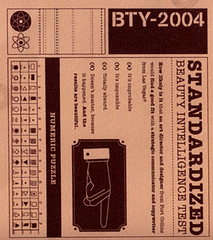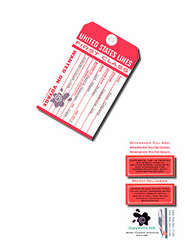While traveling for business every other week during the last two months may have placed company blog posting on a temporary hiatus, I've still found time to manage non-communication across three blogs. The non-communication I'm referring to is blog spam and by 'manage' I mean to delete any gratuitous, self-serving comments that are designed to do nothing more than promote a link to a non-related site.
The format is largely the same: a member name that is usually abandoned, some pat generic compliment about the blog, and a link to a non-related blog about anything from home sales to latte. The post verbiage is largely borrowed by what once was an acceptable comment between non-marketing bloggers as an introduction.
The increase in spam posting has even prompted Blogger.com and other hosts to provide administrators a new feature to permanently remove such posts, leaving no record of their existence. It is a minor nuisance to do so, but much less annoying than allowing the spam poster's often temporary name to remain on the blog, which leaves visitors wondering why someone's comment was deleted. It is a shame this has to be done because blog spam disrupts otherwise worthwhile communication.
Personally, I've always been amazed at the extent some marketers are willing to employ the most intrusive marketing tactics as their sole source of communication. While it obviously works in the short term, companies that employ such practices or hire marketers to do so fail to establish real product or service credibility in the long term. And now, some countries are going a step further.
Most European countries are beginning to issue steep fines against spammers (and the companies that employ them). In fact, Italy has issued a new law that threatens spammers with jail sentences of up to three years. The United States is also becoming vigilant: Massachusetts hit one Internet spam company with a $37 million fine before shutting it down completely. In all, 18 states in the U.S. have laws regulating spam to one extent or another.
You can do something about it too. Never respond to spam (even opt-out lists unless you know the company), always filter it out of your e-mail, and complain to the provider when possible. If the spam is fraudulent (offers products that don't work or pyramid schemes), you can forward the e-mail to the US Federal Trade Commission at uce@ftc.gov. If the spam promotes stocks, forward it to the US Securities and Exchange Commission at enforcement@sec.gov.
Sure, many businesses are experimenting with e-mail as a sales and marketing tool as the Internet has become a bigger part of our everyday lives. There is nothing wrong with this as long as companies remain as responsible as they would be with any other form of communication. After all, there are many consumers that may be interested in a new product, service, or company news (especially previous buyers).
In short, online marketing isn't spam until it is disruptive, intrusive, or unresponsive. And posting what is nothing more than a thinly veiled link on a blog without permission is certainly all of the above. To which all I think I can say is: keep up the good work, spam marketers, someone will get back to you with a verdict soon enough.
The format is largely the same: a member name that is usually abandoned, some pat generic compliment about the blog, and a link to a non-related blog about anything from home sales to latte. The post verbiage is largely borrowed by what once was an acceptable comment between non-marketing bloggers as an introduction.
The increase in spam posting has even prompted Blogger.com and other hosts to provide administrators a new feature to permanently remove such posts, leaving no record of their existence. It is a minor nuisance to do so, but much less annoying than allowing the spam poster's often temporary name to remain on the blog, which leaves visitors wondering why someone's comment was deleted. It is a shame this has to be done because blog spam disrupts otherwise worthwhile communication.
Personally, I've always been amazed at the extent some marketers are willing to employ the most intrusive marketing tactics as their sole source of communication. While it obviously works in the short term, companies that employ such practices or hire marketers to do so fail to establish real product or service credibility in the long term. And now, some countries are going a step further.
Most European countries are beginning to issue steep fines against spammers (and the companies that employ them). In fact, Italy has issued a new law that threatens spammers with jail sentences of up to three years. The United States is also becoming vigilant: Massachusetts hit one Internet spam company with a $37 million fine before shutting it down completely. In all, 18 states in the U.S. have laws regulating spam to one extent or another.
You can do something about it too. Never respond to spam (even opt-out lists unless you know the company), always filter it out of your e-mail, and complain to the provider when possible. If the spam is fraudulent (offers products that don't work or pyramid schemes), you can forward the e-mail to the US Federal Trade Commission at uce@ftc.gov. If the spam promotes stocks, forward it to the US Securities and Exchange Commission at enforcement@sec.gov.
Sure, many businesses are experimenting with e-mail as a sales and marketing tool as the Internet has become a bigger part of our everyday lives. There is nothing wrong with this as long as companies remain as responsible as they would be with any other form of communication. After all, there are many consumers that may be interested in a new product, service, or company news (especially previous buyers).
In short, online marketing isn't spam until it is disruptive, intrusive, or unresponsive. And posting what is nothing more than a thinly veiled link on a blog without permission is certainly all of the above. To which all I think I can say is: keep up the good work, spam marketers, someone will get back to you with a verdict soon enough.





















